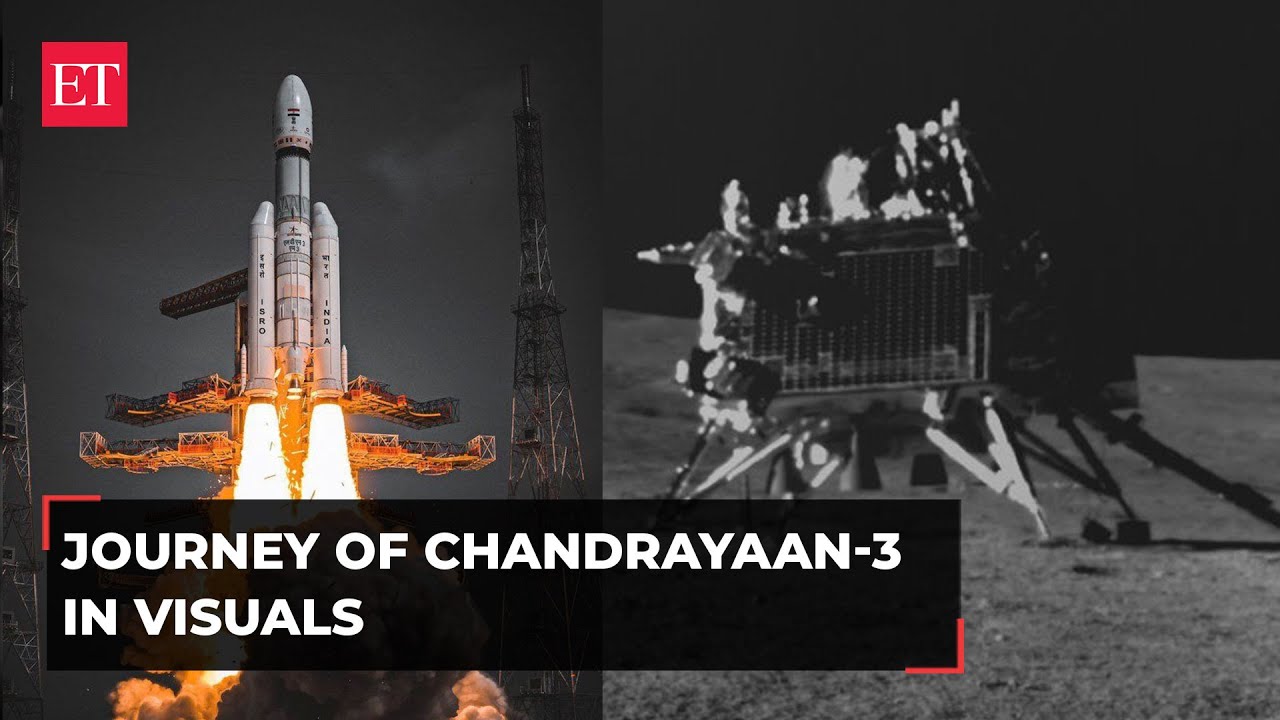


India is proudly celebrating its first National Space Day in honor of the successful landing of the Vikram Lander on the lunar surface during the Chandrayaan-3 mission. With this achievement, India has become the fourth country to successfully land on the moon, making history by landing near the southern polar region. The mission's objective was to demonstrate a safe landing, operate a rover on the moon, and conduct in-situ scientific experiments. India's space saga continues to touch lives while reaching for the moon.
India's Historic First National Space Day
Background:
India's space exploration journey has been marked by significant milestones. In 2014, the country became the first Asian nation to successfully launch an interplanetary mission, Mangalyaan, to Mars. This was followed by the Chandrayaan-2 mission in 2019, which was aimed at landing a rover on the lunar surface near the South Pole.
First National Space Day:
On June 30, 2023, India celebrated its first National Space Day to commemorate the historic landing of Vikram Lander on the lunar surface during the Chandrayaan-3 mission. This marked a significant achievement for India's space program, making it the fourth country to successfully land on the moon.
Significance:
India's first National Space Day symbolizes the country's commitment to space exploration and its growing role as a global leader in this field. The successful landing of Vikram Lander demonstrated India's capabilities in space technology and its ability to undertake ambitious scientific missions.
Top 5 FAQs:
1. What was the objective of the Chandrayaan-3 mission? Ans: The mission's objective was to demonstrate a safe landing, operate a rover on the moon, and conduct in-situ scientific experiments.
2. Where did Vikram Lander land on the moon? Ans: Vikram Lander landed near the southern polar region of the moon, a previously uncharted territory.
3. What happened to Vikram Lander after landing? Ans: After a successful soft landing, Vikram Lander lost communication with the ground station, leading to the termination of the mission.
4. What were the scientific goals of the mission? Ans: The mission aimed to study the lunar surface, search for water-ice, and conduct experiments related to the moon's environment and geology.
5. What is the future of India's space program? Ans: India plans to continue its exploration of the moon and Mars, develop new launch vehicles, and send astronauts to space in the coming years.

ISRO has been making continuous efforts to establish contact with the Vikram lander and Pragyan rover, which were put into sleep mode earlier this month, ahead of the lunar night. However, the prolonged spell of cold weather conditions, reaching up to -150 degrees Celsius, has made it difficult for them to wake up. With the sunrise on the Moon's south polar region and their solar panels believed to be optimally charged now, ISRO is hoping to revive the lander and rover and continue with their experiments and studies. The latest update from ISRO is that the plan to reactivate them has been delayed to September 23 due to the extreme lunar weather conditions.

Monsoon season may bring romantic vibes, but it's also a nightmare for contact lens wearers. Rainwater contains bacteria and pollutants that can cause eye infections, especially when wearing contact lenses. Ophthalmologists recommend using glasses instead and practicing good hygiene to avoid irritation and infection.

India's first human spaceflight mission, Gaganyaan, is one step closer to reality as ISRO successfully tested the main parachutes for the mission's Crew Module. The test, conducted at the Babina Field Firing Range in Uttar Pradesh, is part of the qualification process for the Gaganyaan parachute system. The system, which includes 10 parachutes of different types, is designed to ensure the safe and stable descent of astronauts returning to Earth. This milestone test marks a crucial step forward for India's ambitious space exploration goals.

As World Pneumonia Day is observed on November 12, experts are drawing attention to the dangerous link between air pollution and respiratory illnesses. In India, the post-Diwali smog adds to the already high levels of pollution, increasing the risk of pneumonia, particularly among vulnerable populations. While outdoor air pollution is often blamed, experts emphasize that poor indoor air quality also plays a significant role in triggering and worsening respiratory infections. Health professionals are urging for better air quality regulations and precautions to prevent this deadly connection between pollution and pneumonia.

On November 12, 2025, the world will once again mark World Pneumonia Day, a global health observance highlighting the urgent need to combat one of the leading causes of death, especially in young children. Despite being preventable and treatable, pneumonia continues to claim millions of lives each year, but efforts such as the ‘Every Breath Counts’ coalition and the Global Action Plan for the Prevention and Control of Pneumonia and Diarrhoea are working towards reducing preventable deaths through vaccination and improved healthcare access. Let us continue to raise awareness and take action against this preventable killer.

As an expectant mother, it is important to be aware of the warning signs that could indicate a potential complication during pregnancy. Dr. Swatee Gaggare, a Consultant in Obstetrics & Gynaecology, shares important insights on the key warning signs every pregnant woman should know. These include unusual bleeding or spotting, severe cramps or abdominal pain, and excessive vomiting. Early detection and prompt medical intervention are crucial for a safe outcome for both mother and baby.

November 10 marks World Science Day for Peace and Development, a celebration that highlights the crucial role of science in our daily lives. This year, the event will take place in Samarkand, Uzbekistan, where the theme "Trust, Transformation, and Tomorrow: The Science we Need for 2050" will be explored. Through public engagement and education, scientists aim to address global issues and create a better future for our planet.

On World Tsunami Awareness Day, scientists are highlighting the importance of traditional knowledge in predicting and preparing for tsunamis. Coastal communities have long relied on observing animal behavior to sense environmental changes and predict natural disasters. This technique has proven effective in areas without advanced warning systems. Scientists are now studying these natural warning signs to improve early detection and save lives in vulnerable regions.

Every year, India celebrates the birth anniversary of the renowned physicist CV Raman, who is known for his groundbreaking work on light scattering and the Raman Effect. Despite receiving numerous offers to work in Western labs after winning the Nobel Prize in Physics, Raman remained committed to his belief in fostering a strong scientific culture in India and mentoring future scientists. His discovery of the Raman Effect continues to be relevant and widely used in various fields today, serving as a testament to the quantum nature of light and the energy levels in molecules.

As meditation gains popularity as a mental well-being tool, concerns about potential side effects have emerged. A recent study by a team of researchers from the University of Melbourne delved into the prevalence of adverse experiences among meditators in the United States. By recruiting nearly 900 adults from various meditation skill levels, the study aimed to provide more accurate estimates of how common these side effects are and what factors may contribute to experiencing them. The findings highlight the need for clearer reporting standards in future research on meditation.